Eyepieces, turret with objective lenses, mechanical stage, knobs for focus adjustments: these are all classic features we would include if asked to imagine or describe what a microscope looks like. That’s not surprising, considering most of us were first introduced to these types of microscopes in our middle or high school biology class. This conventional image of a microscope is known as a traditional or optical microscope.
With technological advancements pushing us more into the digital age, however, optical microscopes now have a new contender: the digital microscope.
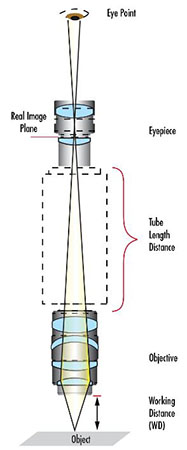
Image Viewing: The Baseline Distinction Between Optical and Digital Microscopes
The most obvious difference between the two types of microscope is how the user obtains the magnified image of the object they are inspecting. The optical microscope features a lens system with eyepieces and objective lenses (seen in image on the right), each of which has a magnification power, to create the total magnification the inspected object is seen at. As a result, the user looks through the eyepieces to view the magnified image.
On a digital microscope, the eyepieces are replaced by a digital microscope camera, which captures the real-time magnified image through an optical lenses and displays onto a monitor or computer screen for viewing. Digital microscopes come in a variety of forms, from simpler handheld types to more advanced systems with complex processing or measurement software. If an optical microscope also has a trinocular port, it can be equipped with a digital camera to convert it into a microscope for digital imaging capabilities.
Advantages of Using a Digital Microscope
Monitor and Digitizing Benefits
One of the main benefits of the digital microscope is its ergonomics for the user. Because the live image is displayed onto a monitor, you’re able to analyze your component while sitting comfortably in an upright position. Viewing on a monitor eliminates the need to crouch over the eyepieces on a traditional optical microscope, which often results in neck and eye strain. This is particularly helpful if you need to conduct inspections on a microscope over a long, extended period of time. Digital microscopes are best paired with a 24”or larger monitor with HDMI output for comfortable eye-level viewing. For applications with limited benchtop space, our HD 1080p models can be paired with a 12” HD monitor that can be mounted onto camera body or the stand post to save on foot print while still maintaining ergonomics.
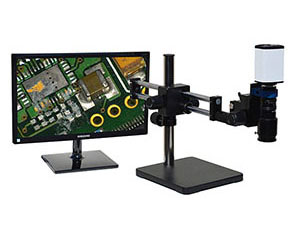
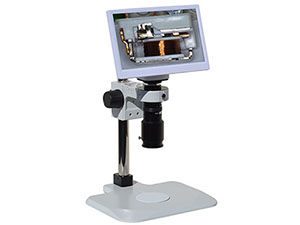
Digital microscopes allows operator to view inspection through a monitor screen,
which is more ergonomic than viewing through an optical microscope’s eyepieces.
Additionally, digital microscopes provide the ability to capture and store images for future review and documentation purposes. Most of our digital microscopes save images and recordings directly to an SD card and without requiring connection to a PC. Viewing live and saved images/videos on a monitor screen also introduces the opportunity to have open discussion with colleagues, which can minimize error or subjectivity during inspections. Digital microscopes, likewise, make great educational or training tools for live demonstrations to students or workforce alike.
Software and Customization
Digital microscopes often also come with built-in and/or PC-side measurement software. This provides more comprehensive inspections, and makes measurements and data collection quick and convenient. The well-roundedness of digital microscopes enables their use in broader applications, including medical, art and industrial examinations. It is also a popular choice for quality analysis and quality control procedures in the electronics industry.
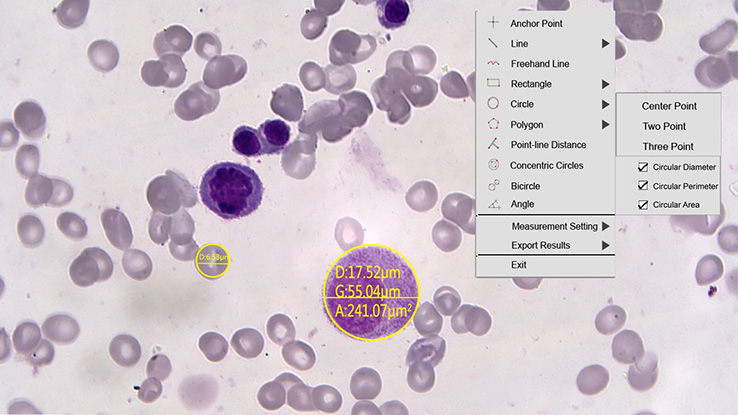
Digital microscopes come in varying sizes and configurations. Some, like the Dino-Lite handheld digital USB microscopes, are small and portable to allow inspections in hard-to-reach areas that traditional microscopes cannot get to. Others can be paired with different accessories (such as coaxial lighting, custom stands) or comes with advanced software features to accommodate for unique applications.
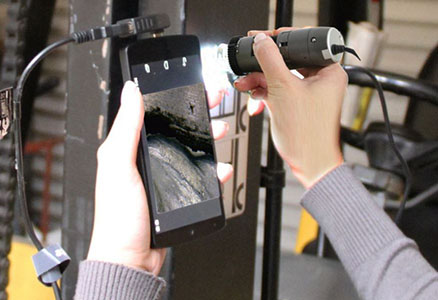
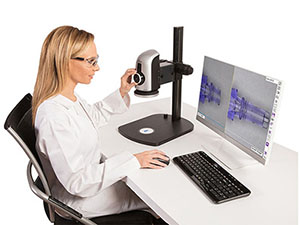
Our digital microscopes display in full HD 1080p or 4K Ultra HD resolution live video at 60 fps with no delay or distortions on the monitor screen. In general, digital microscopes have an easier learning curve to operate while providing many capabilities not found on a traditional microscope.
Advantages of Using an Optical Microscope
Despite the many benefits of a digital microscope, there are still advantages to using an optical microscope for your inspection. While a digital microscope can be configured with various stands to allow different angled viewing, the digital microscope generates digital images that are “flattened”, and therefore, provides limited depth perception compared to a traditional binocular or trinocular microscope. Optical microscopes are ideal for true 3D observation with greater depth of field. Some digital microscopes can mitigate this issue with their extended depth of focus feature. This function stacks multiple images together to create one superior image with extended depth of field in that single area of inspection.
Secondly, the optical microscope’s magnification is determined by the eyepiece magnification and lens magnification. Depending on your eyepiece-objective lens pairing, the microscope has a wide and high magnification range potential, optimal for detailed and small sized inspections. Even though most digital microscopes may have a limited zoom range in comparison to traditional microscopes, they often have a variable working distance range to accommodate for any working distance restrictions that a traditional microscope’s objective lens’s fixed working distance does not allow flexibility for. Our high magnification digital microscopes, such as HD 1080p HD806 model or 4K Ultra HD 4K406 model, both offer additional front lens adapters or objective lenses to help achieve the desired magnification range needed.

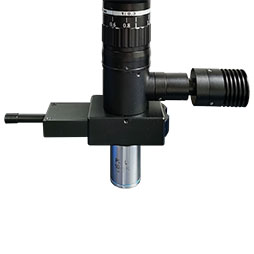
Although digital microscopes may provide simpler operations, they may still be limited by their specific lens configuration. Optical microscopes offer different contrasting techniques, such as differential interference contrast (DIC), phase contrast, and fluorescence that may be required for specialized observations.
But there are ways to bypass this. If you have a trinocular optical microscope, you can install a digital camera onto the microscope to capture high quality imaging without losing out on the contrasting technique. Certain digital microscope models may also have accessories available to integrate further customization. Our high magnification models (HD806, HD809, 4K406, etc), for instance, also have the option of adding a DIC module, if needed.
Despite the rise in popularity for digital microscopy, traditional optical microscopes remain a common and reliable instrument in laboratory and classroom settings, especially if the bells and whistles a digital microscope has to offer aren’t needed.
The Compromise Between Optical and Digital Microscopes
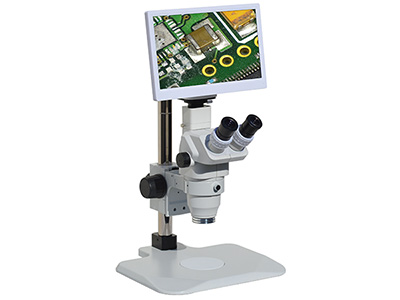
Optical and digital microscopes each have their perks and shortcomings. While digital microscopes offer an easier user experience and better ergonomics, sometimes eyepieces are still required for an additional level of detailed inspection. Our HD8TR trinocular digital microscopes offer the best of both worlds, giving you the choice to switch between eyepiece and monitor viewing as needed. This could be a good compromise if you are trying to transition your experienced workforce towards a purely digital inspection protocol, but they are accustomed to inspecting components through eyepieces and are hesitant to make the change.
We are also authorized dealers for many reputable traditional microscope brands, including Meiji, Motic, Scienscope and more. These brands feature trinocular microscope options that can be configured with a digital microscope camera to access digital microscopy features without taking away the benefits of an optical microscope.
Still not sure if you should go with an optical or digital microscope for your application? Contact us today for assistance!
